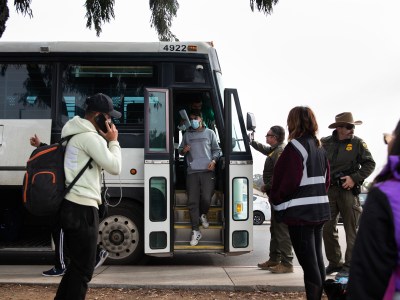The Latest

Trump allies warn California leaders they could go to prison over sanctuary city laws

2024 in California photos: Campus protests, floods, election shifts and more

California stiffened penalties for theft — and more changes are coming

California’s economy of ups, downs and uncertainty: 2024 year in review

Health laws, bird flu and Trump preparation: 2024 year in review


Why California needs to double-down on its apprenticeship programs
Share this:
Guest Commentary written by
Paul Nelson De La Cerda
Paul Nelson De La Cerda is the co-founder and principal of The Clover Agency.
Apprenticeships are a time-honored tradition dating back centuries, and serve as a pathway to skilled trades and professions. They play a vital role in shaping our workforce and economy, and offer valuable hands-on training and mentorship, helping people get the skills needed to succeed in high-demand careers.
According to research by Jobs For The Future, there were almost 93,800 apprentices registered in California last year, up from more than 84,200 in 2018. Additionally, CalMatters reported that California registered more than 180,000 new apprenticeships since Gov. Gavin Newsom’s 2018 pledge to add 500,000 in the decade after he took office.
This shows there is plenty of room for growth.
That said, almost every sector is grappling with the so-called “skills gap,” which refers to the mismatch between the skills employers need and the skills jobseekers have. As we navigate a constantly evolving job market, the role of apprenticeships has become more critical than ever.
In reality, the skills gap impacts every industry. It presents itself when there is a shortage of workers with the necessary technical, soft or specialized skills needed for a job. As industries change, the demand for certain skills can shift quickly, leaving many workers unprepared.
As California employers work to address the skills gap, large issues start to pop up. Notably, they’re faced with reduced productivity. When businesses can’t fill roles with the right skills, productivity suffers. This makes sense — employees might take longer to complete tasks or require more training, which slows down operations.
Coupled with this, it’s becoming normal for businesses to invest in upskilling or reskilling their current workforce to close the gap. While training and skills development opportunities are great, they take a toll on employees because they’re working and playing catch up on acquiring skills.
This can lead to burnout, job dissatisfaction and higher turnover. Research from SHRM, a human resources firm, found that 44% of surveyed U.S. employees feel burned out, 45% feel emotionally drained and 51% feel “used up” after the workday.
Read Next
Career education is redundant and convoluted. Gavin Newsom says he’ll fix it
Ultimately, the lack of qualified workers hinders a company’s ability to innovate. Without the right staff in place, businesses will struggle to adopt new approaches that can give them a competitive edge.
This brings us to a very important point: Employers need to double-down on apprenticeship programs.
Expanding apprenticeship programs in California is one of the best ways to bridge the skills gap. These programs offer people hands-on experience and teach the practical skills needed for today’s job market.
Apprenticeship programs are often developed in collaboration with employers, ensuring the training actually provides necessary skills. Additionally, apprenticeship programs can be created to train workers for niche roles that may not be widely covered in school.
For many people, apprenticeships offer a more accessible and affordable path to high-demand careers. The positions are often paid, ensuring participants can earn while they learn. These programs offer a practical avenue for people who prefer hands-on learning. They are also an important route for people from underrepresented groups, or who lack access to higher education.
There’s several workforce development and apprenticeship programs growing across California, stemming from the Apprenticeship Building America grant program, Opportunity Young Adult Career Pathway Program and the state’s High Road Training Partnerships initiative. With these federal and state grants, selected public and private organizations are working together to develop partnership programs that prepare participants for careers in manufacturing, public sector work, health care, construction, IT and engineering.
By offering hands-on experience and accessible pathways to employment, apprenticeships offer a scalable and equity-focused approach to today’s workforce challenges. Californian public and private organizations should invest in these programs to close the skills gap, improve employee retention and create a more resilient workforce.
Financial support for this story was provided by the Smidt Foundation and The James Irvine Foundation.
Read More
How early care apprenticeships can help address California’s dire teacher shortage
Semiconductor industry seeks apprentices to meet the rising need for workers